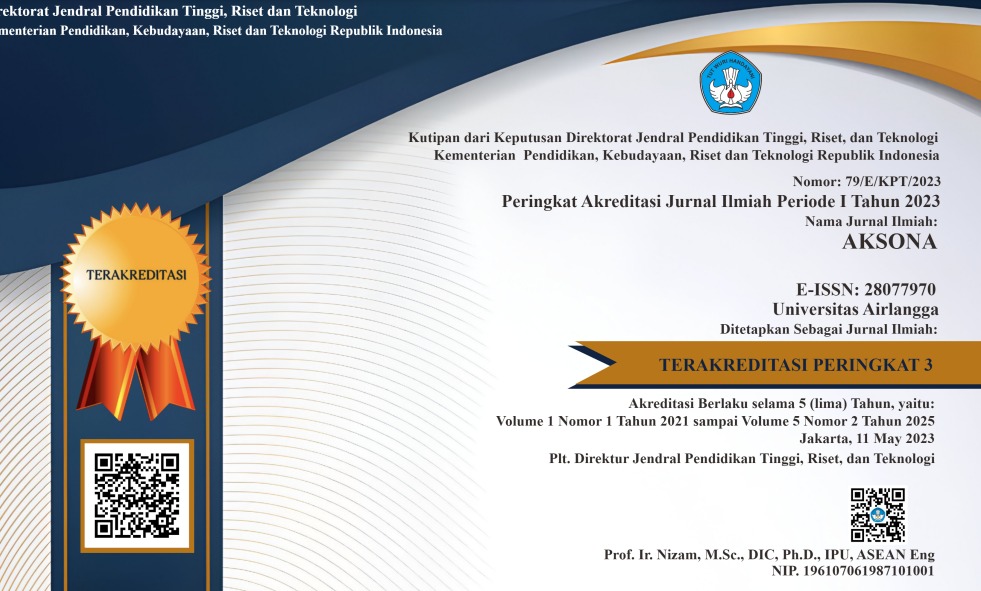D-Dimer Levels as a Predictor of Clinical Outcome and Mortality in Acute Ischemic Stroke Patients: A Systematic Review and Meta-Analysis
Downloads
Highlight:
- An increase in the D-dimer level indicates activation of the coagulation system through thrombus formation and fibrinolysis.
- The meta-analysis found a significant relationship between elevated d-dimer levels and worsening clinical outcomes and increased mortality.
- The D-dimer level can be used as a predictor for predicting clinical outcomes and mortality in acute ischemic stroke patients at each duration of follow-up.
ABSTRACT
Introduction: In ischemic stroke, high D-dimer levels are frequently found, indicating coagulation with ongoing thrombus formation and fibrinolysis. Objective: The purpose of this study was to analyze the role of D-dimer in predicting clinical outcomes and mortality in acute ischemic stroke patients. Methods: A systematic literature search was conducted using the PRISMA method through the PubMed, Science Direct, and Google Scholar databases. The quality of the article was assessed using the Newcastle-Ottawa Scale (NOS) and statistically analyzed using Review Manager software version 5.4.1. Results: Eight articles had good quality according to NOS and matched the criteria for the literature search. Elevated D-dimer levels and worsened clinical outcomes have a significant result when discharged from the hospital: OR 2.37 (95% CI 1.68–3.35); I2 = 45% p < 0.00001; 1-month: OR 1.75 (95% CI 1.38–2.23), I2 = 47% p < 0.00001; 3-months: OR 2.43 (95% CI 2.00–2.95), I2 0% p < 0.00001; 6-months: OR 2.64 (95% CI 1.92–3.63), I2 = 0% p < 0.00001; and 12-months: OR 1.92 (95% CI 1.31–2.82), I2 = 62% p < 0.0008. Elevated D-dimer level and increased mortality have a significant result with OR 2.25 (95% CI 1.78–2.85), I2 = 45% p < 0.00001. Conclusion: D-dimer can be used as a predictor of clinical outcome and mortality in acute ischemic stroke.
Anindhita T, Harris S, Wiratman W. Buku ajar neurologi. 2nd ed. Jakarta: Departemen Neurologi FK UI; 2022. 167 p.
Kemenkes RI. Laporan hasil riset kesehatan dasar (Riskesdas) Indonesia tahun 2018. Jakarta; 2018. Available from: https://kesmas.kemkes.go.id/assets/upload/dir_519d41d8cd98f00/files/Hasil-riskesdas-2018_1274.pdf
Chapin JC, Hajjar KA. Fibrinolysis and the control of blood coagulation. Blood Rev. 2015;29(1):17–24.
Ye N, Liu Z, Wang X, Xu X, Wu W. Evaluation of analytic and clinical performance of thrombin–antithrombin complex and d-dimer assay in prognosis of acute ischemic stroke. Blood Coagul Fibrinolysis . 2020;31(5):303–9.
Liu Y, Li F, Sun H, Sun Y, Sun H, Zhai Y, et al. Combined prognostic significance of D-dimer level and platelet count in acute ischemic stroke. Thromb Res. 2020;194:142–9.
Wells G, Shea B, O'Connell D, Peterson J, Welch V, Losos M, et al. The Newcastle-Ottawa Scale (NOS) for assessing the quality of nonrandomised studies in meta-analyses. The Ottawa Hospital Research Institute. 2014.
Deeks JJ, Higgins JP, Altman DG. Analysisng data and undertaking meta-analyses. In: Higgins J, Thomas J, Chandler J, Cumpston M, Li T, Page M, et al., editors. Cochrane Handbook for Systematic Reviews of Interventions version 63. 2022.
Weitz JI, Fredenburgh JC, Eikelboom JW. A Test in context: D-Dimer. J Am Coll Cardiol. 2017;70(19):2411–20.
Sato T, Sato S, Yamagami H, Komatsu T, Mizoguchi T, Yoshimoto T, et al. D-dimer level and outcome of minor ischemic stroke with large vessel occlusion. J Neurol Sci. 2020;413:116814.
Yao T, Tian B-L, Li G, Cui Q, Wang C, Zhang Q, et al. Elevated plasma D-dimer levels are associated with short-term poor outcome in patients with acute ischemic stroke: A prospective, observational study. BMC Neurol. 2019 ;19(1):175.
Yang X, Gao S, Ding J, Chen Y, Zhou X, Wang J-E. Plasma D-dimer predicts short-term poor outcome after acute ischemic stroke. Salluh JIF, editor. PLoS One. 2014;9(2):e89756.
Wang J, Feng A, Xu J, Liu Y, Li F, Sun Y, et al. D-dimer and its combination with blood lipid on prognosis of patients with acute ischemic stroke. J Stroke Cerebrovasc Dis. 2020;29(12):105394.
Hou H, Xiang X, Pan Y, Li H, Meng X, Wang Y. Association of level and increase in D"dimer with all"cause death and poor functional outcome after ischemic stroke or transient ischemic attack. J Am Heart Assoc. 2021;10(3):e018600.
Wang J, Ning R, Wang Y. Plasma D-dimer level, the promising prognostic biomarker for the acute cerebral infraction patients. J Stroke Cerebrovasc Dis. 2016;25(8):2011–5.
Abd-Elhamid Y, Tork M, Abdulghani M. Prognostic value of D-dimer measurement in patients with acute ischemic stroke. Egypt J Neurol Psychiatry Neurosurg. 2016;53(3):146–50.
Bao Q, Zhang J, Wu X, Zhao K, Guo Y, Yang M, et al. Clinincal significance of plasma D-dimer and fibrinogen in outcomes after strokre: A systematic review and meta-analysis. Cerebrovasc Dis. 2022 ;1–26.
Zhang P, Wang C, Wu J, Zhang S. A systematic review of the predictive value of plasma D-dimer levels for predicting stroke outcome. Front Neurol. 2021 ;12:693524.
Nezu T, Kitano T, Kubo S, Uemura J, Yamashita S, Iwanaga T, et al. Impact of D-dimer levels for short-term or long-term outcomes in cryptogenic stroke patients. J Neurol. 2018 ;265(3):628–36.
HuÅ£anu A, Iancu M, Bălaşa R, Maier S, Dobreanu M. Predicting functional outcome of ischemic stroke patients in Romania based on plasma CRP, sTNFR-1, D-Dimers, NGAL and NSE measured using a biochip array. Acta Pharmacol Sin. 2018;39(7):1228–36.
Folsom AR, Gottesman RF, Appiah D, Shahar E, Mosley TH. Plasma D-Dimer and incident ischemic stroke and coronary heart disease. Stroke. 2016 ;47(1):18–23.
Copyright (c) 2023 Pearl Dhodik Wirasman, Abdulloh Machin, Jenar Harumi

This work is licensed under a Creative Commons Attribution-ShareAlike 4.0 International License.





















